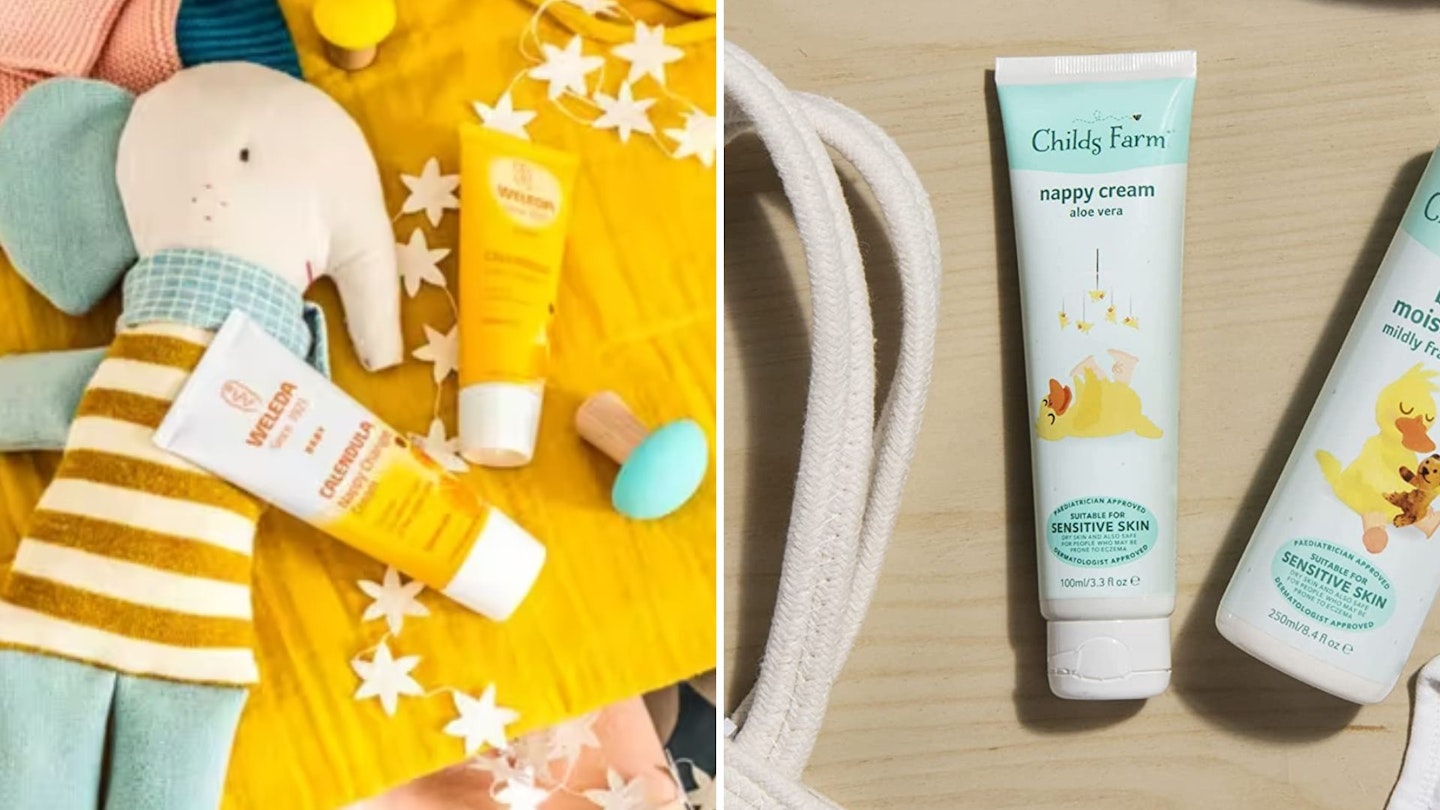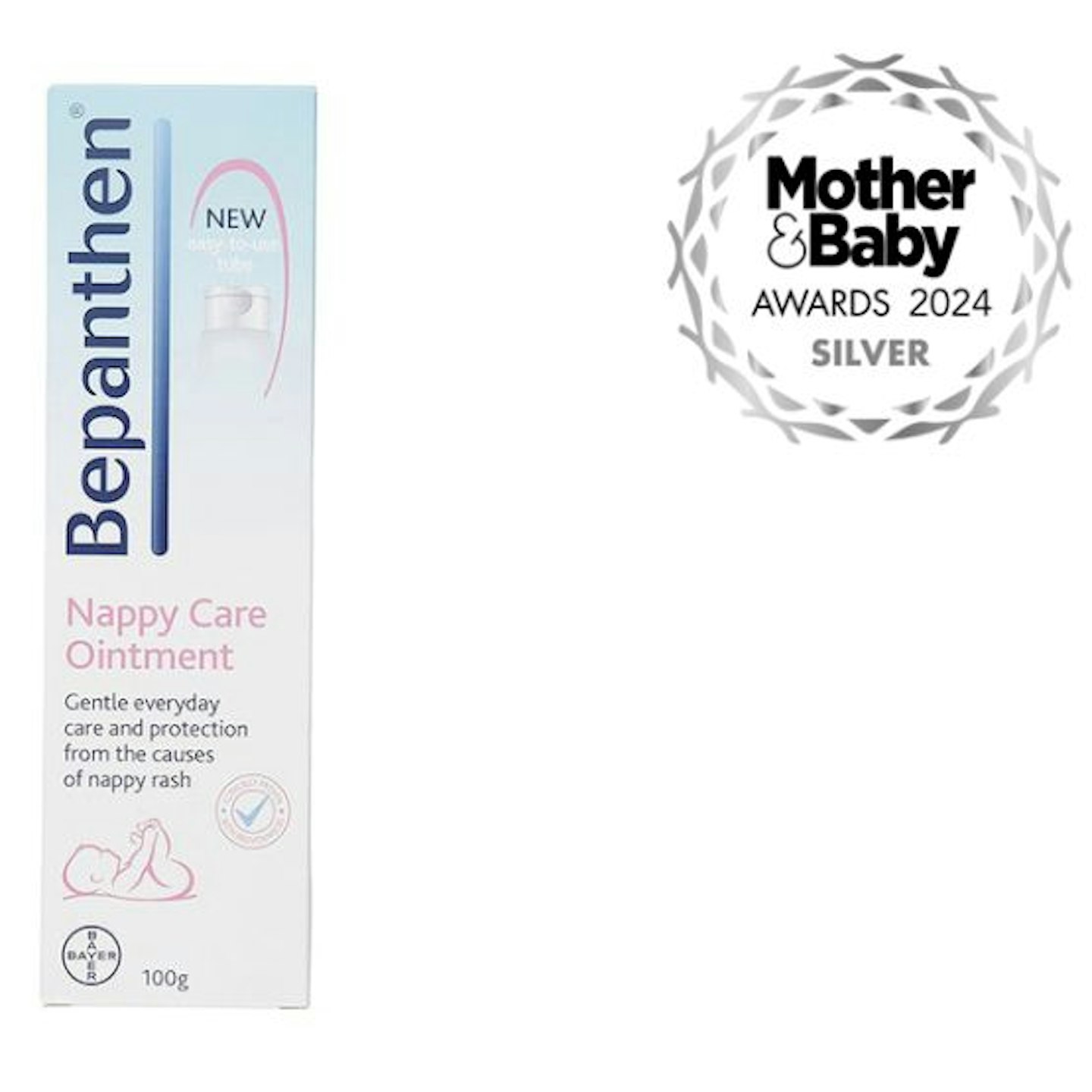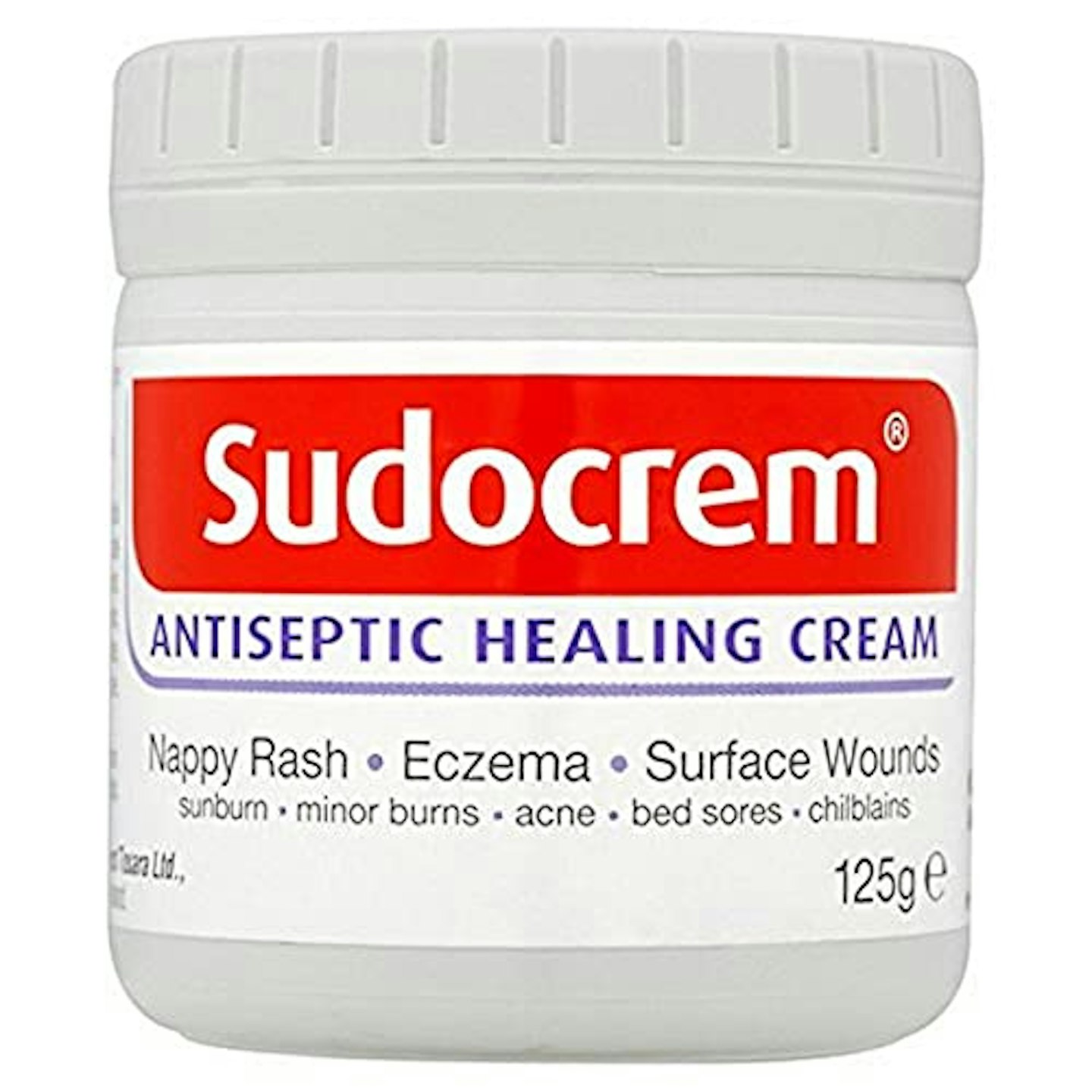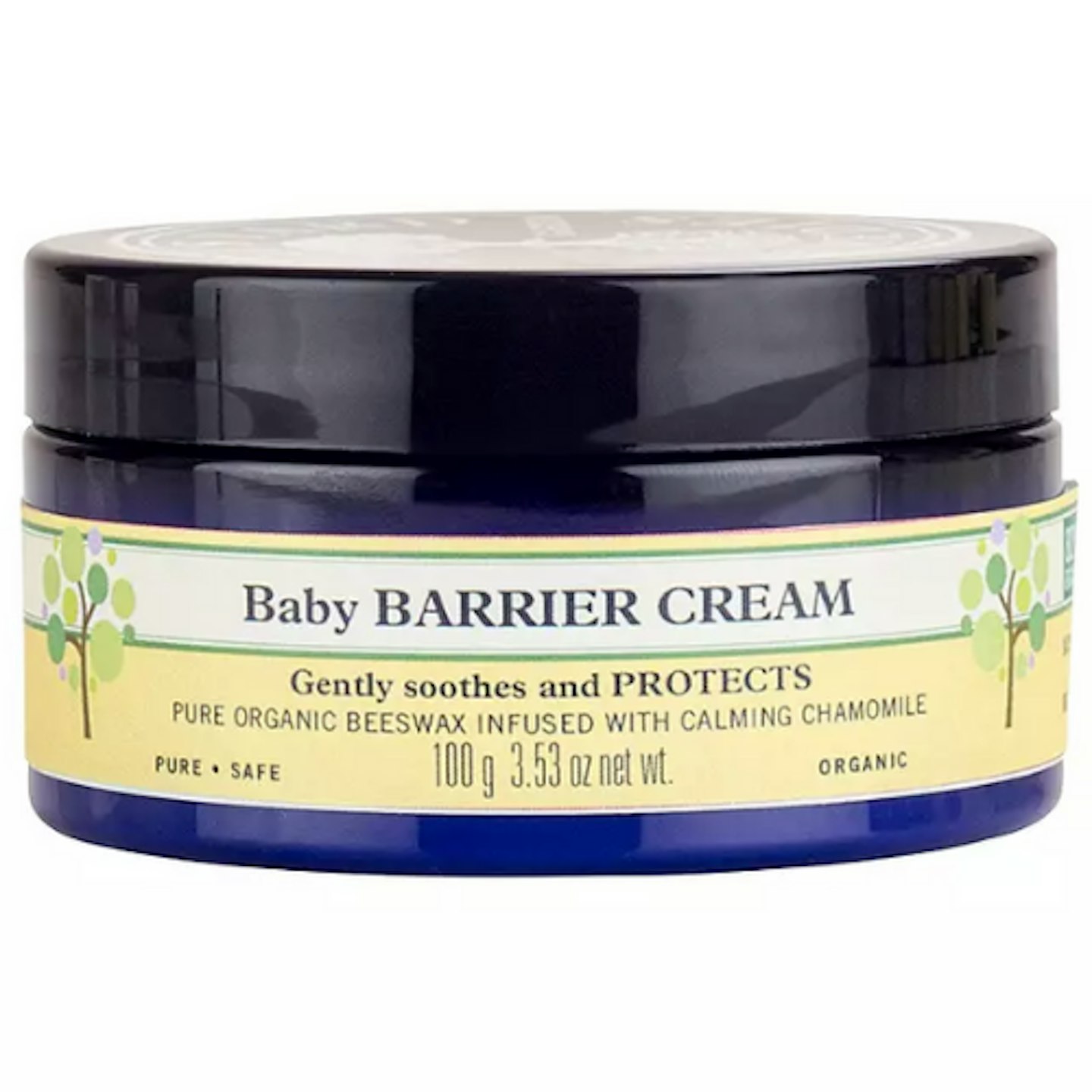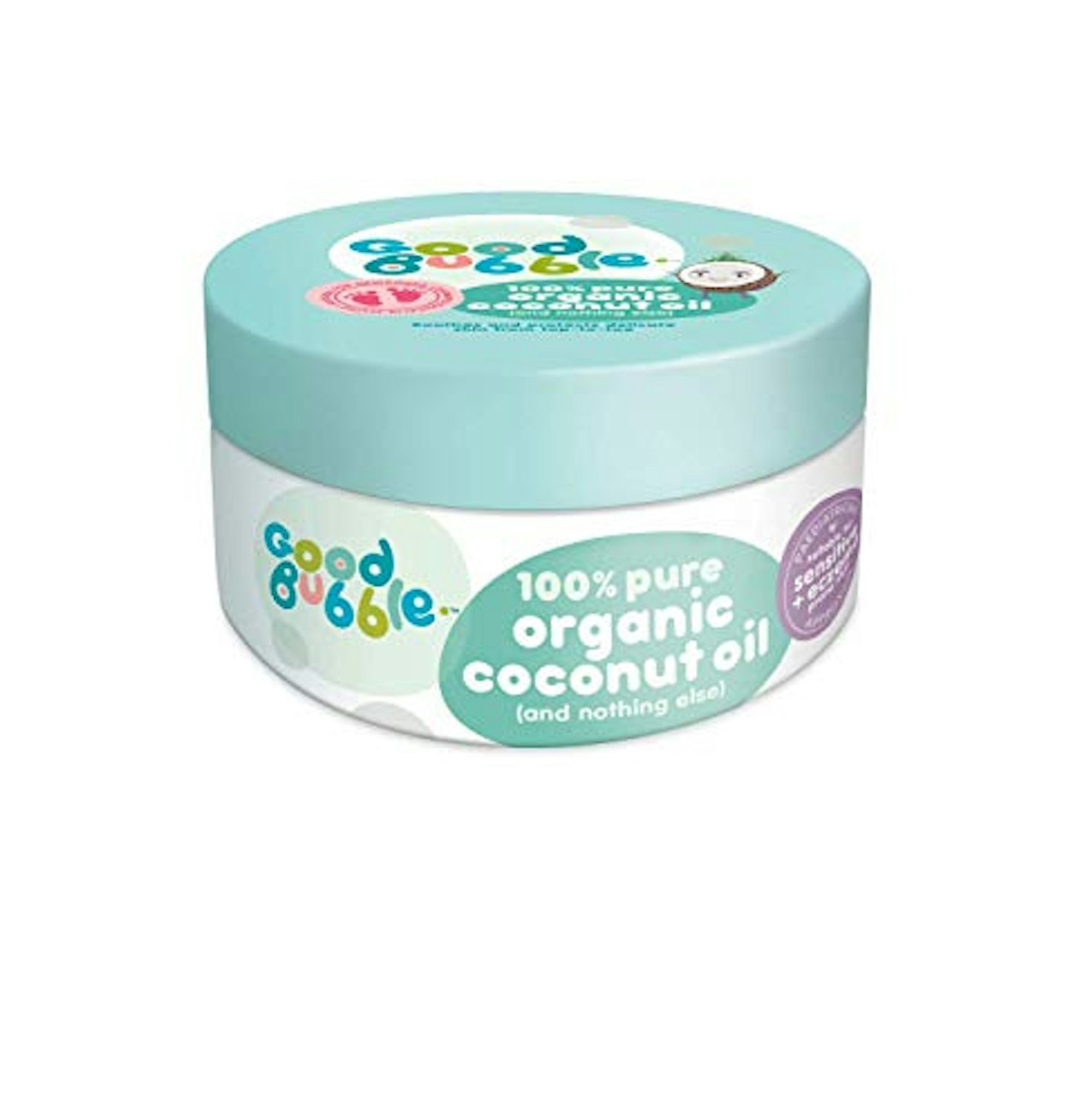Almost all babies suffer from nappy rash during their time wearing nappies, and seeing your baby's perfectly peachy bottom turn sore and red raw can be really heartbreaking, but using one of these best nappy rash creams will really help. There are lots of nappy rash creams available to buy that will help clear up that red botty and make your little one much more comfortable.
Whether your baby is wearing disposable nappies or you've opted for the more environmentally friendly reusable nappies, there are several causes of nappy rash that aren't just down to your baby's skin being in contact with wee or poo for a little bit too long. New foods, medicines and chaffing can all cause a nappy rash, even when you're taking care of their sensitive skin as best as you can during nappy changes and using sensitive skin-friendly baby wipes.
Best nappy rash creams at a glance
•Best overall nappy rash cream: Child's Farm Nappy Cream, £2.70
•Best natural nappy rash cream: Weleda Baby Calendula Nappy Cream, £5.52
•Best nappy rash cream for easy application: Aveeno Baby Daily Care Nappy Barrier Cream, £3.87
•Best antiseptic nappy rash cream: Sudocrem Antiseptic Healing Cream, £3.75
•Best healing nappy rash cream: Metanium Nappy Rash Ointment, £4.28
•Best sensitive nappy rash cream: Good Bubble Organic Coconut Oil, £5.89
With so many nappy rash creams to choose from, it can be hard to know which one is best for your little one, but factors to consider include the ingredients, speed of relief, how long it lasts and how effective the healing is, as well as how easy it is to apply. There are also different creams that are more effective on different types of nappy rashes, including antibacterial and barrier creams.
Nappy rash creams have more benefits than just healing sore bottoms. They can used as preventative barrier creams so your little one stays comfortable all the time, and they are moistening and nourishing, too. Plus, some creams have multiple uses and can be used on dry skin elsewhere on the body if your baby has other skin conditions. When choosing a nappy cream, think about how often you plan to use it and whether it is needed as a barrier cream or to heal existing nappy rash. Taking this into account, it is important to compare cost and product size while some parents might be loyal to a particular brand or want to use only natural ingredients.
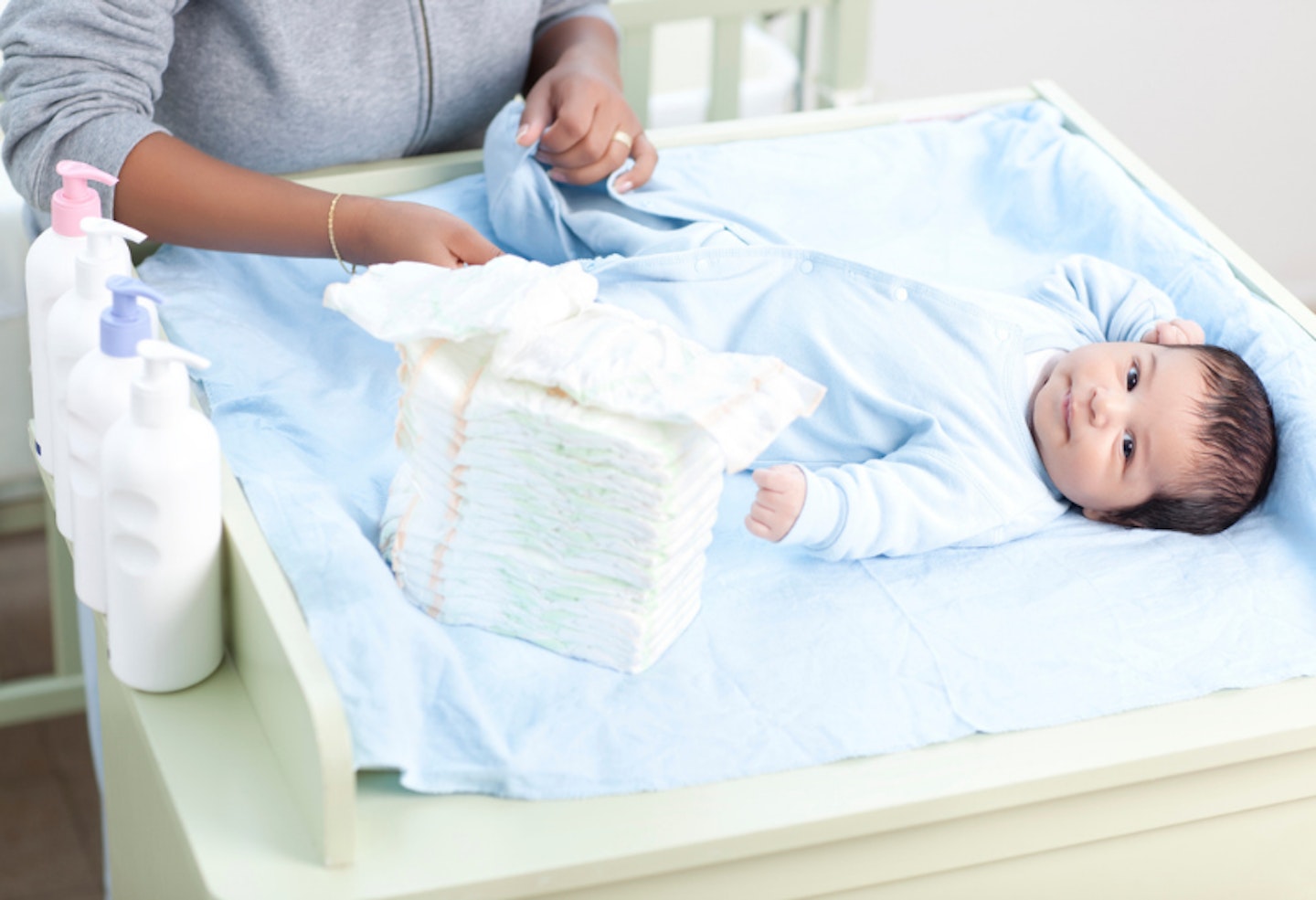
What causes nappy rash?
There are a number of causes of nappy rash. Midwife Marley Hall explains, “Nappy rash is an irritation to the skin that is often caused by wet or dirty nappies being in contact with a baby’s bottom for a long period of time. It is recognised by a well-defined red rash with some areas of the skin appearing raised or swollen around the nappy area, and your baby may become distressed or agitated due to itching or pain."
According to the NHS, the main causes of nappy rash are:
• Baby's skin being in contact with wee or poo for a long time
• The nappy rubbing against your baby's skin
• Not cleaning the nappy area or changing the nappy often enough
• Soap, detergent, or bubble bath
• Alcohol-based baby wipes
• Your baby recently taking antibiotics.
How we chose and tested the best nappy rash creams
Our product recommendations are based on a combination of real-world testing from our burgeoning army of mum testers and the extensive knowledge of our experienced editorial team and product specialists. Where we can, we also consult experts who specialise in the field to ensure you get the right advice along with the right product, and we listen to what you say as well. For nappy rash creams we got advice from midwife, Marley Hall, who is not only a practising midwife and author of the book, Midwife Marley's Guide For Everyone: Pregnancy, Birth and the 4th Trimester, but she is a mum of 5 herself, including twins, so she knows a lot about nappy rash and how to prevent and treat it.
Our thriving mum community on our Facebook group #mumtribe also often hold great insights as to which products mums really like best and why, helping us highlight the products that meet what you really want.
For the essential products, our annual Mother&Baby Awards shortlist the top products tested, and you can find full reviews from our mum testers provided on the product page. The winners and runners-up for each category will then appear in our top picks article for that product, along with other products that were rated highly by our team.
When it comes to the best nappy rash cream, we consider various things such as budget, safety, ingredients, effectiveness, and application. Our testers also assess the products based on usability, design, quality and value for money and score them out of ten. Their score is used to determine the awards. Find out more about how we test products for Mother&Baby.
Nappy rash cream safety
Nappy rash creams are designed to protect the sensitive nappy area from soreness and also to heal and soothe if nappy rash does occur, so generally, they are very safe to use. Nappy rash creams with zinc oxide or petroleum jelly work well to protect the skin from moisture, as well as creams with lanolin. However, some nappy rash creams are completely natural or organic, and these will also be safe.
If a cream causes the nappy rash to get worse, stop it immediately. Similarly, if a barrier cream does not prevent nappy rash, then it might be best to try something else, and if your little one's skin gets really sore, then get advice from your doctor or pharmacist in case you need an over-the-counter or prescription-only cream. Although most nappy creams are completely safe, ingredients to avoid include heavily fragranced products, parabens, oil or talc.
Also, ensure that when using nappy cream, or any cream to treat baby rashes, any small lids are out of your little one's reach, as well as the nappy cream itself. Although most ingredients will be safe, they are not intended for internal use, so you won't want your baby to try tasting it (and we all know how much babies love putting things in their mouths). It is also advisable to stick to using nappy cream for the nappy area, unless the product states it has multiple uses.
Types of nappy rash cream
There are different types of nappy rash cream available, and it's important to know the difference so that you can buy the best one to soothe the redness and soreness of your baby's bottom:
Barrier creams
Use a barrier cream as a preventative measure in your daily nappy-changing routine as long as your baby’s skin is intact. Once your tot’s bum is completely dry, apply a super-thin layer before popping on their nappy.
Emollient creams
If the skin on your bubba’s bum looks dry, itchy, or scaly, then an emollient will help to get the skin back into a state where it can deal with the onslaught of all the poo and wee. They soothe, smooth, and hydrate the skin, but you’ll need to reapply frequently.
Antiseptic creams
If that nappy rash is starting to look a little worse, then apply twice a day until the rash resolves. It’ll help to soothe your child's skin as it gets to work on the bacteria, so it’ll quickly help them feel more comfortable too.
Antifungal creams
If your little one has a Candida nappy rash, the infection will need to be treated with an anti-fungal cream. Get your GP's advice first - they'll be able to identify if it is indeed a fungal infection. If you want to buy it over the counter, you'll probably have to speak to the pharmacist first to make sure you're getting the best product.
How to use nappy rash cream
If your baby's nappy rash isn't clearing up by itself, you can use a cream or other nappy rash treatment to help heal it. Marley advises, “When treating nappy rash, parents should clean the affected area as quickly as possible, dry gently with a soft towel, or a muslin cloth and then apply a pea-sized amount of nappy rash treatment cream to the affected area.”
Nappy rash cream can also be used as a barrier cream and applied more frequently during nappy changes to prevent nappy rash if your little one keeps getting sore or if they are suffering from diarrhoea, which is more likely to cause nappy rash. Barrier creams work best when used before the rash appears, so they can be used at every nappy change. They work by creating a physical barrier between the contents of the nappy and the skin.
How to choose the best nappy rash cream
With so many different creams on the market, it can be hard to know what to buy, but there is no doubt that nappy cream is a must for the family medicine cabinet. When choosing a nappy cream, consider the following:
Type: A barrier cream creates a barrier between the contents of your baby's nappy and their skin, while a treatment cream will soothe and heal nappy rash when it occurs. You won't need to use a treatment cream every day, only when the nappy rash flares up, whereas, in comparison, a barrier cream can be used at every nappy change. Also, consider whether you prefer cream, ointments, serums or balms.
Size: It might be tempting to buy a big pot of nappy cream because it will last longer and is most likely better value, however, it won't be as easy to carry with you. A small tube or pot of nappy rash cream is much more convenient for your nappy bag and to keep to hand on the go.
Texture: Some nappy creams are thicker and heavier, like Sudocrem and will coat your baby's bottom, whereas a serum will be thinner and lighter. It is a personal preference which you choose and might depend on what best suits your little one.
Absorbency: Some creams are absorbed much quicker and more easily than others which might sit on your little one's skin for a while. This will make a difference in how much cream you need to apply and how often you need it.
Price: As with all baby products, nappy rash creams vary in price. You might want a budget cream for your nappy bag or occasional use, and then you might want to spend more on the nappy rash cream you use every day at home. Ultimately, though, it depends on what suits your little one rather than buying lots of different creams.
Ease of use: Think about the container the nappy rash cream comes in. It is often in tubes or pots and sometimes pump dispensers. A tube is handy for a nappy bag, but a pot is easier to access when trying to change a wiggly baby, as is a pump dispenser set up by the changing station at home.
Cleaning: Some nappy rash creams are quite thick, and some, like Metanium, are coloured, so they can stain clothes. On the whole, nappy rash cream can be wiped off of fabric, but some might leave greasy patches or marks.
Ingredients: Ingredients can be quite varied in nappy rash cream, but look for something like zinc oxide, which creates a barrier between the skin and the nappy. Some nappy rash creams also contain antiseptic for sore bottoms, and with the advice of a pharmacist or doctor, you might need an anti-fungal ingredient like clotrimazole. Alternatively, there are completely natural or organic options, such as plant-based or vegan.
Do you need a nappy rash cream?
It is advisable to have some on hand when you have a little one. Their skin is delicate, and at some point, it is likely they will struggle with nappy rash. However, there are things you can do to prevent nappy rash, such as, changing wet or dry nappies as soon as possible, cleaning the nappy area gently but thoroughly, wiping from front to back, using water or fragrance-free baby wipes and leaving your little one's nappy off as long as possible at nappy changes to get fresh air to the nappy area. You can also use a barrier cream at every nappy change, which will help prevent nappy rash from developing.
Best overall nappy rash cream
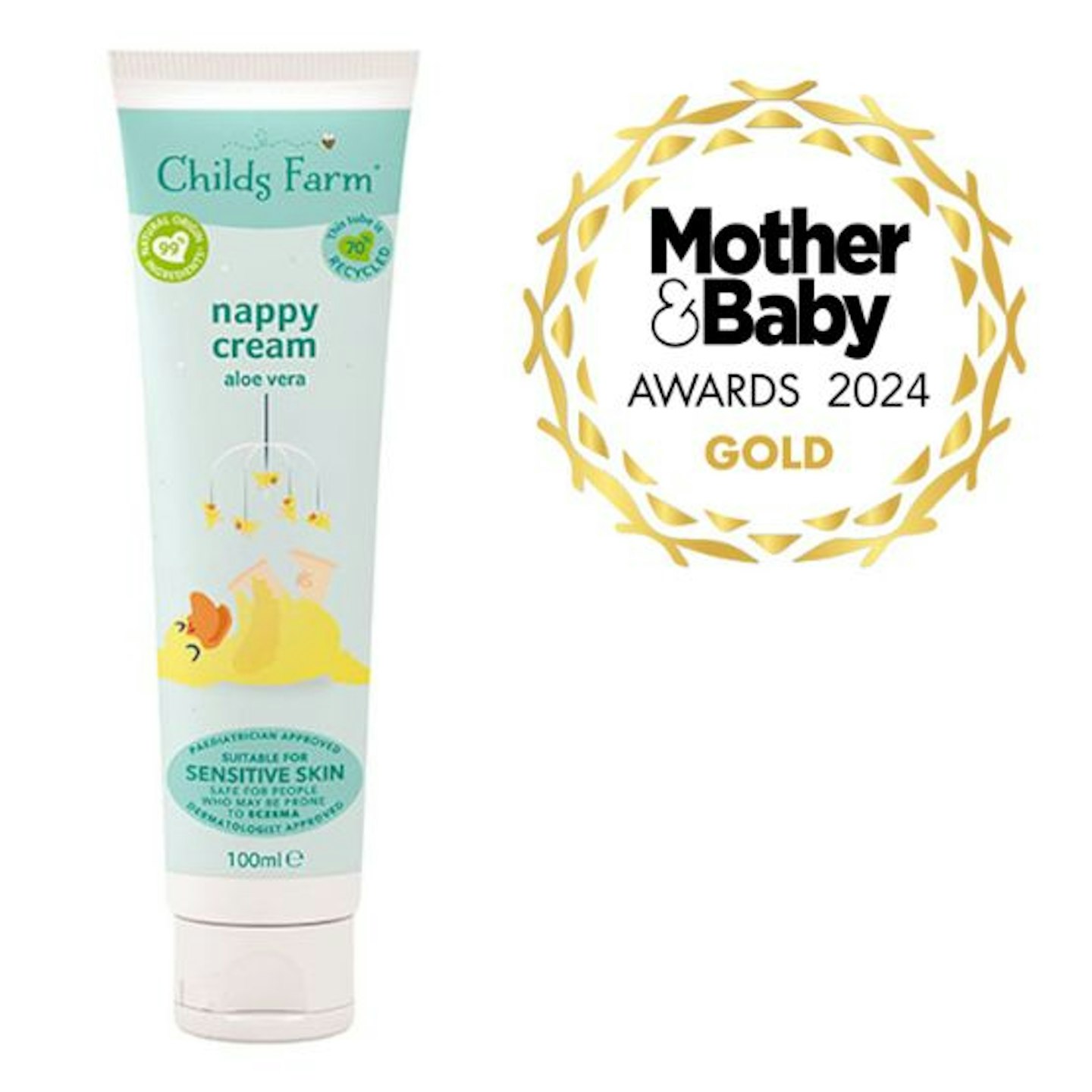
Description
Awards: The Childs Farm Nappy Cream was awarded Silver and Gold for Best Nappy Cream at the Mother&Baby Awards 2023 and 2024.
Childs Farm's nappy cream is formulated with natural and naturally derived, ethically sourced and skin-soothing ingredients to keep baby bottoms protected from nappy rash.
We like that it contains super moisturising aloe vera, cocoa butter, and shea butter, and this light and absorbent cream is suitable for all skin types, including dry, sensitive and eczema-prone skin.
Aloe vera, cocoa butter, and shea butter are really beneficial for the skin. They have moisturising properties that not only help to soothe irritation but also have the potential to improve the skin's elasticity - perfect for your growing bubba.
It is also approved by paediatricians and dermatologists, which is reassuring for parents looking for a safe everyday cream.
However, a few of our testers didn't think it was as effective at treating nappy rash as other creams, such as Metanium nappy rash ointment. However, in our expert opinion, it is the best option for nappy rash.
Our expert tester said: "This is a really nice cream which works very well as an everyday nappy cream. It goes on easily and is absorbed quickly with no greasy residue. It left my baby’s bottom soft and was gentle on his skin. It didn’t cause any rash or irritation. It has a very slight fresh fragrance of aloe vera. I was impressed with how quickly it was absorbed and liked the silky texture. It is great for everyday use and for mild irritation, but I didn’t find it as effective as my usual product in treating an established case of nappy rash."
Read the full Childs Farm Nappy Cream review.
Pros
- Lightweight cream
- Suitable for dry and eczema-prone skin
- It's Paediatrician and dermatologist approved
Cons
- Some of our testers found that it was difficult to get the last parts out of the tube.
Best barrier nappy rash cream
Description
Awards: The Bepanthen Nappy Care Ointment 100g was awarded Silver for Best Nappy Cream and Best Baby Skincare Range/Product at the Mother&Baby Awards 2019 and 2024.
This is one of the most popular nappy rash creams on the market, and mums worldwide swear by it. We love that you can use it as a barrier cream to prevent the rash from occurring, or, if the rash appears, apply it to soothe and heal that red bottom as well. The ointment contains dexpanthenol, which helps to prevent nappy rash and soothe it if it has already begun.
Our testers were impressed with how long one tube lasts; a little goes a long way, making it a fantastic, cost-effective choice.
However, if you are looking for a completely natural product, it is good to know that some ingredients include paraffin, petroleum and lanolin, which not all testers like to use on their little one's skin. Paraffin, petroleum, and lanolin are not ideal ingredients for baby products due to potential skin irritation, and some parents have found that it is heavy on their babies' delicate skin.
Mum Georgina says: "I would recommend this cream to a friend as it does what I would expect from a nappy cream. Luckily, it is rare for my baby to get a nappy rash, but at the first sign of any redness, I have put a small layer of Bepanthen on, and the redness has resolved by the next nappy change. One small tube lasts a very long time."
Read what more mums had in our Bepanthen Nappy Care Ointment review.
Pros
- Long-lasting
- Suitable for everyday use
- Both prevents and treats nappy rash
Cons
- It contains lanolin and paraffin, which not all testers liked
Best nappy rash cream for everyday use
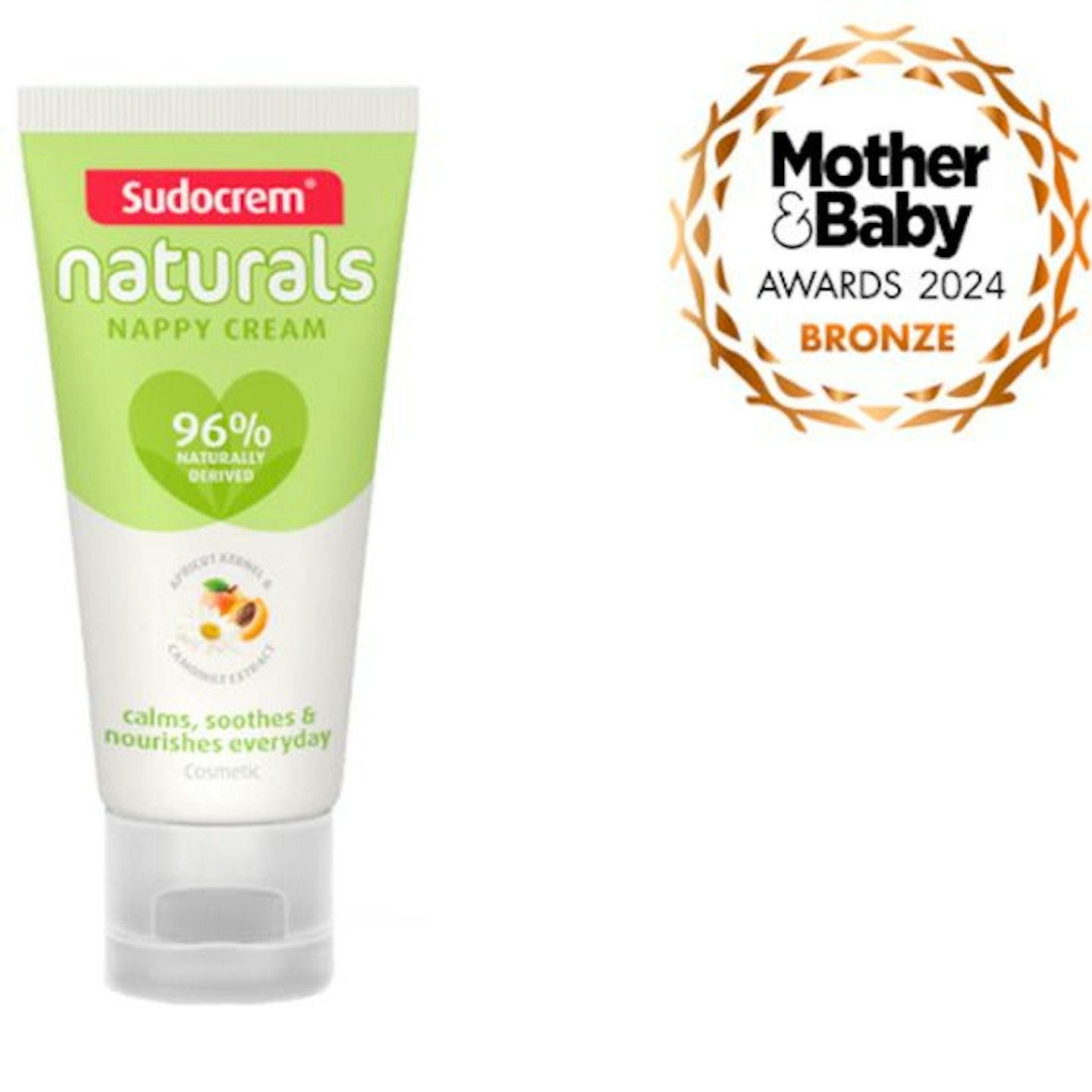
www.boots.com
Description
Awards: Won Bronze for Best Nappy Cream at the Mother&Baby Awards 2024.
Use Sudocrem Naturals Nappy Cream at every nappy change to help care for your baby’s delicate skin and leave it feeling soft and supple.
This is an excellent choice for preventing nappy rash, and our testers love that it contains 96 per cent naturally derived ingredients to calm, soothe and nourish your baby’s delicate skin daily.
Our testers thought applying it was easier than traditional Sudocrem Antiseptic Healing Cream, but it was more expensive.
Our mum tester said: "We love using any Sudocrem product for nappy rash, but we especially liked the Sudocrem Naturals Nappy Cream as it was nice and easy to squeeze from the tube the desired amount, and it smelt a lot nicer than the traditional Sudocrem. It was super easy just to pop in a nappy bag or on a changing table to use. It would be nice to get a larger version of this product also."
Read our full Sudocrem Naturals Nappy Cream review.
Pros
- Easy-to-use bottle
- Small - perfect for on-the-go
- 96 per cent of naturally derived ingredients
- Soft
- Fully recyclable packaging
Cons
- It is more expensive than some of the other nappy creams on the list
Best natural nappy rash cream
Description
Specially formulated to look after babies' bottoms, this gentle but effective cream is a Mother and Baby favourite. We love that it contains completely natural organic ingredients and that a team of midwives and pharmacists has researched each Weleda baby product to support the development of healthy skin.
Our testers thought this was great because you only need a small amount; although some said the consistency was a bit runny, they agreed it is quickly absorbed and effective at preventing nappy rash.
The creamy texture is effortless to apply and provides long-lasting moisture, leaving the baby's skin feeling soft, especially if used regularly. Unlike some nappy creams on the market, we love that this cream doesn't leave your little one's bottom feeling too greasy.
One of the most unique properties of the Weleda Baby Calendula Nappy Cream is that it contains calendula extract. This ingredient is known for its anti-inflammatory properties. Calendula is rich in flavonoids, triterpenoids, and other compounds that have been found to reduce inflammation and soothe irritated skin.
Our mum tester m****um, Victoria, says: "I would recommend the Weleda range as they are a reasonably priced complete range that is suitable for a baby as well as older children, particularly those with sensitive skin. The whole range smells divine, and they last well, as you only need a small amount. The nappy cream is also good; it rubs in easily, and it seems to prevent nappy rash all."
Shortlisted for Best Baby Skincare Range/Product in 2019, read our Weleda Calendula range review.
Pros
- Supports skin regeneration
- Soothes redness
- Great value
- Anti-inflammatory properties
Cons
- Consistency quite liquid
Best nappy rash cream for easy application
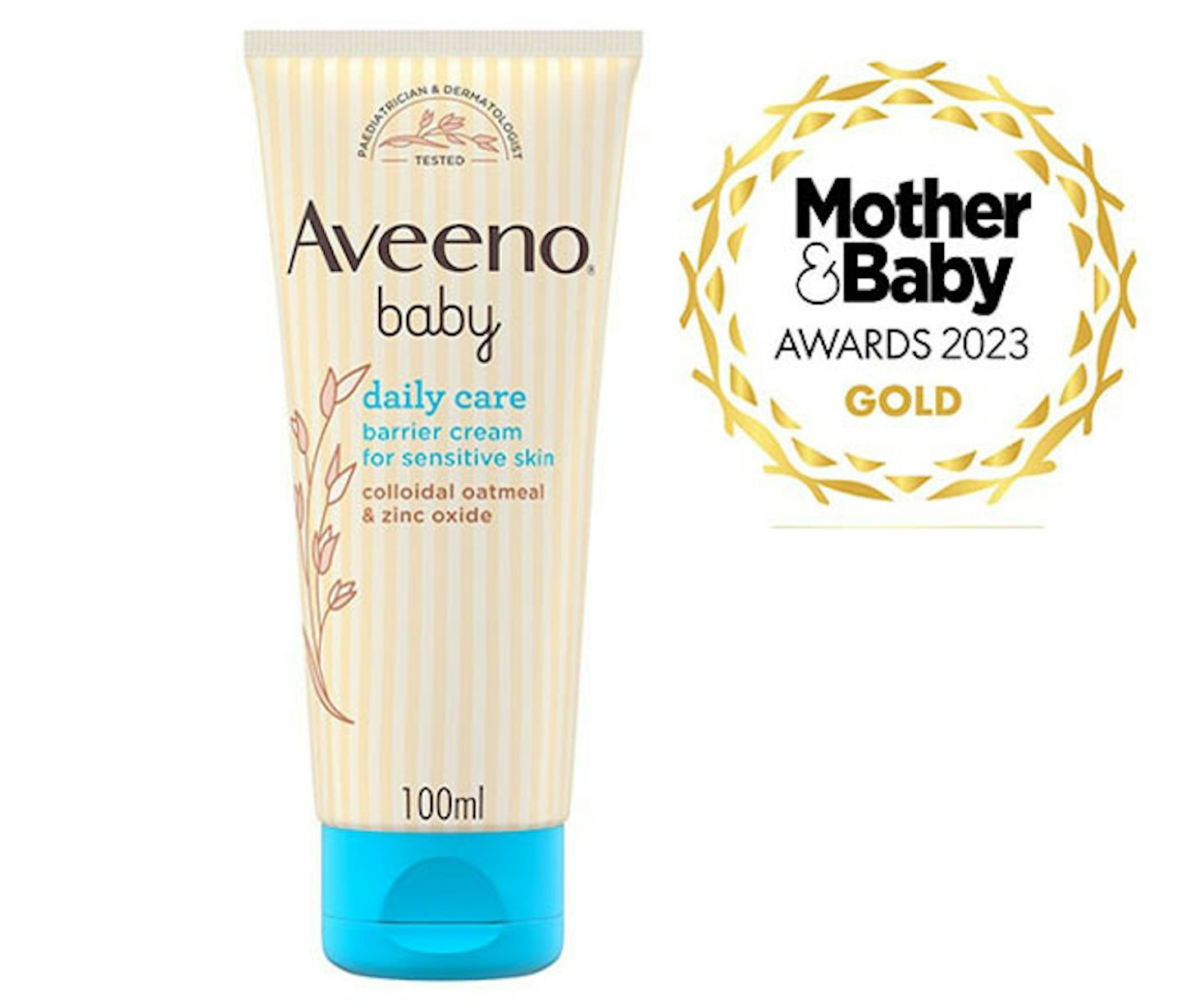
Description
Awards: Won Gold in the Mother&Baby Awards 2023 for Best Nappy Cream.
Aveeno Baby Daily Care Nappy Barrier Cream helps to soothe sensitive and delicate baby skin, protecting it from the causes of nappy rash.
The formula creates a breathable barrier on the nappy area, protecting it against external irritants, and our testers liked how easy it was to apply. It delivers rapid and long-lasting comfort and visible improvement in skin appearance, and we like that it is suitable for newborns.
Suitable for baby's normal to dry skin, with soothing colloidal oatmeal, it also contains zinc oxide, which is a great ingredient in creating a barrier to protect your little one's skin.
One of our expert testers said: "It was very easy to apply, you don’t have to use much at all, and it spreads really easily. It's not oily or thick like other products we have used before, and I also love the fact that it is made with oats and is all-natural; you know there are no hidden nasties. You know exactly what is going on your baby, the product is natural and lovely to use."
Read the full Aveeno Baby Daily Care Nappy Cream review.
Pros
- Suitable from newborn
- Easy to apply
- Unscented
Cons
- A bit sticky and not easily absorbed
Best soothing nappy rash cream
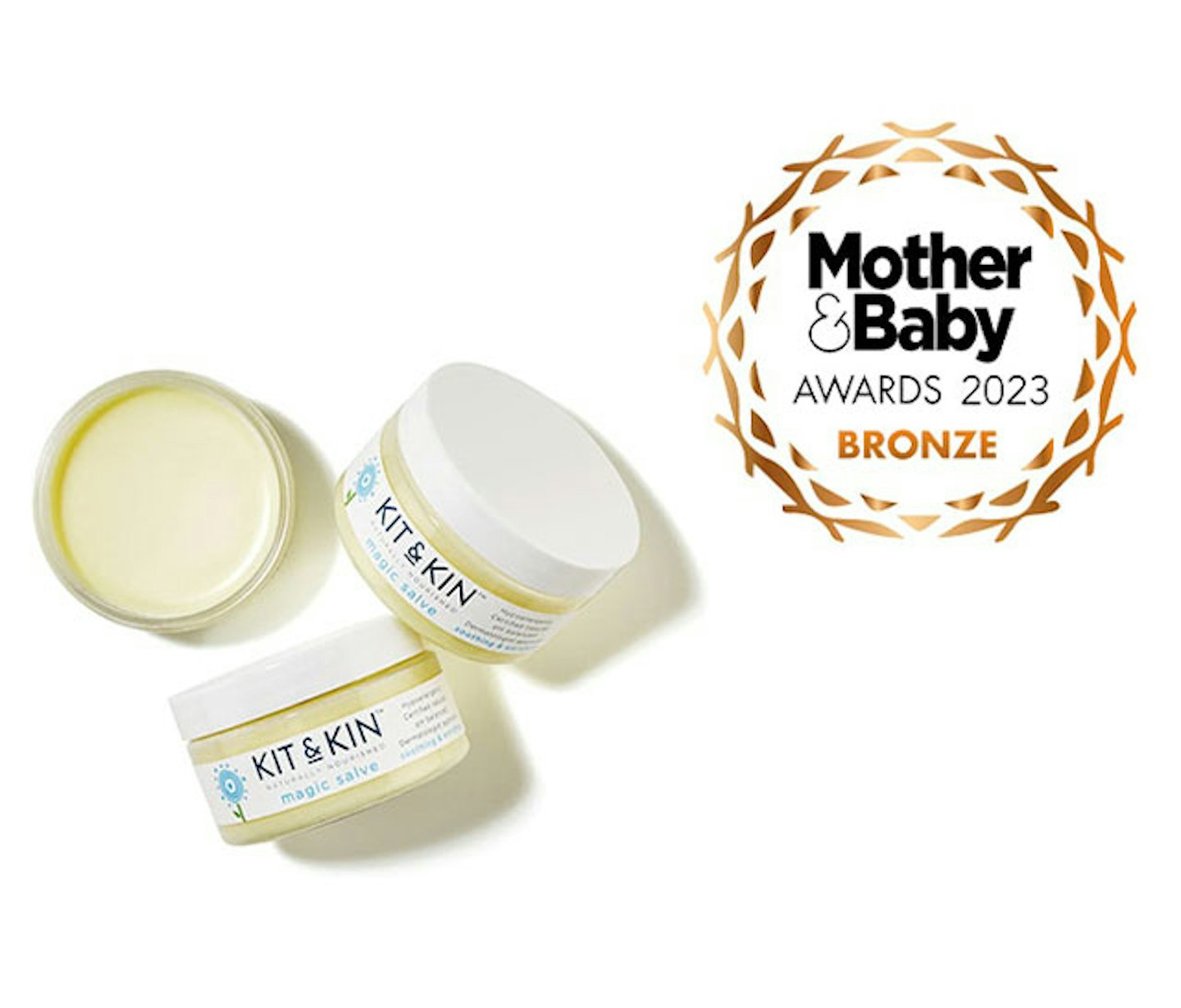
kitandkin.com
Description
Awards: Won Bronze in our 2023 Mother&Baby Awards for Best Nappy Cream.
Nearly all babies suffer from nappy rash at some point, so finding the best nappy cream to soothe and protect their skin is important.
This salve from KIT & KIN is made from 100 per cent natural ingredients, which we love, and it contains a blend of nourishing oils and botanical extracts to calm and protect your baby's delicate skin from further irritation.
Our testers were impressed with how smoothly it can be applied to a baby's skin, however, it is scented so some worried it might not suit sensitive skin.
A fragrance-free nappy rash cream like Aveeno Baby Daily Care Nappy Barrier Cream might be better for sensitive skin. However, this is approved by dermatologists, and we think it's a great balm for treating nappy rash or dry spots of skin on your own skin.
Our expert tester said: "This magic salve is indeed magic. It's intended primarily for nappy rash, but we didn’t need it for that so much and it was great to use on heat rashes and sore cheeks where my son is teething terribly at the moment. It feels thick, like a barrier cream, but smoothes into skin without much effort and does not noticeably sit on top of the skin unlike other brands. It's also great on my elbows and hands."
Read our full Kit & Kin range review.
Pros
- Suitable from birth
- Smoothes into skin nicely
- The salve can be used for various purposes for you and your baby
Cons
- Scented might not be suitable for all skin
Best antiseptic nappy rash cream
Best emollient nappy rash cream
Description
If you don't have a pot of this in the bathroom, are you even a parent?
Parents have hailed Sudocrem Antiseptic Healing Cream since its introduction in the 1930s. It gained popularity due to its effectiveness in treating various skin conditions, including eczema, minor burns, and cuts. Making it a must-have product for the home.
Just make sure you don't leave it within reach of little hands - it gets EVERYWHERE, and testers did say it is very thick. However, the water-repellent base will prevent rashes from occurring, and if there is a soreness, it'll soothe and calm that bottom straight away, which testers love.
Our top tip is a little goes a long way, if you apply too much, you will be left with a noticeable white coating on the skin.
Plus, if you need any more reasons to get a pot of Sudocrem in the house, there are some clever uses for your pot of Sudocrem that you've probably never thought of.
Our expert tester said: "This gentle cream protects your baby’s delicate skin from any chemicals that can cause the rash, softens the skin and guards against infection.The cream is affordable, safe and can clear up nappy rash in just a day. The smaller tube of cream is a good shape, practical and convenient for bringing it out and about, and is quick and easy to use when on the go."
Shortlisted for Best Baby Skincare Range/Product in 2014 and 2015 - read our Sudocrem Care and Protect review here.
Pros
- Antibacterial
- Soothes sore or inflamed skin
Cons
- It's very thick
Best healing nappy rash cream
Best emollient cream
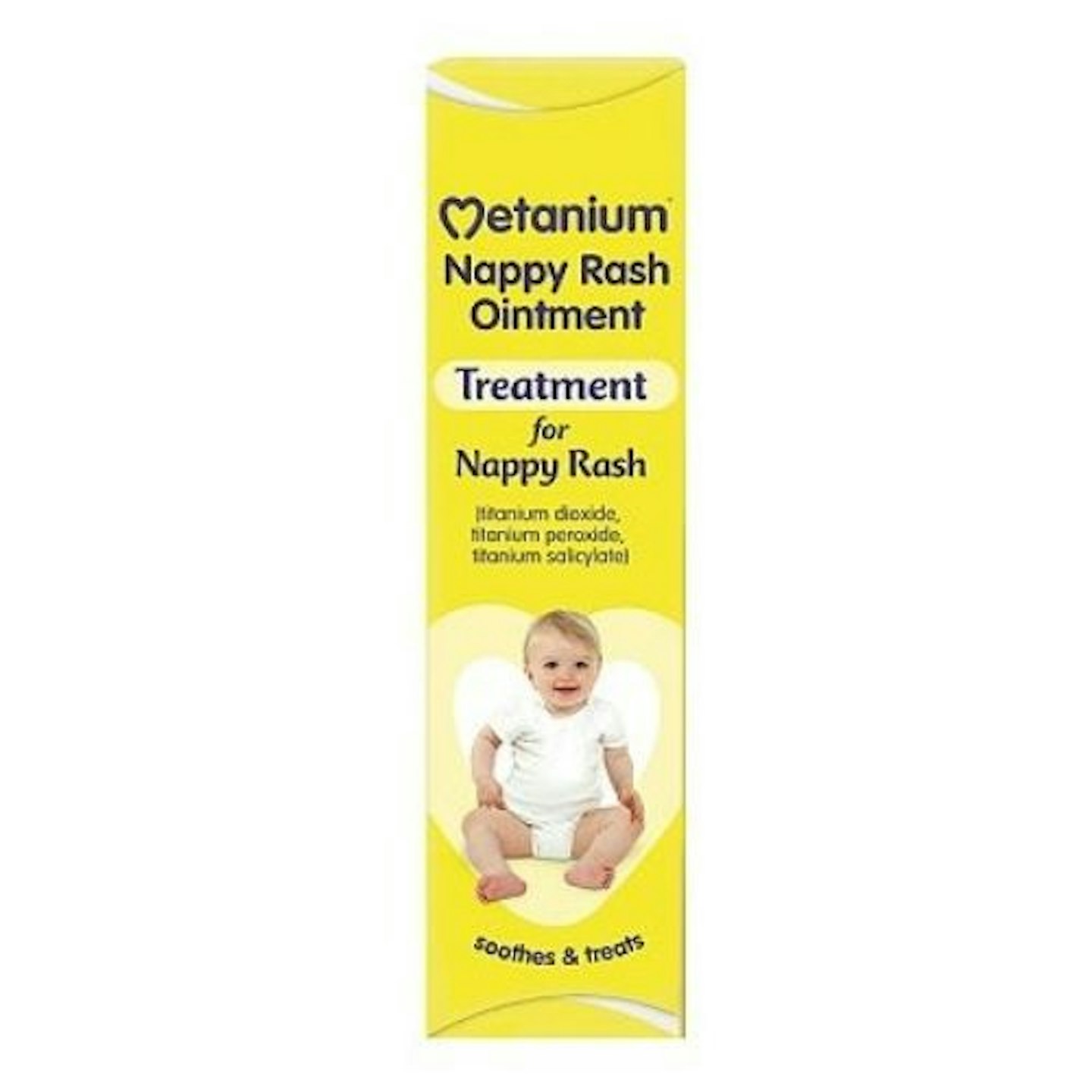
Description
Suitable to use from birth, the Metanium Ointment is 100 per cent vegan-friendly and gentle on your baby's delicate (and sore!) skin, which our testers liked.
The bright yellow tube also makes it incredibly easy to spot at the bottom of your baby bag, and this really clears up nappy rash.
Our testers did find that because it is a yellow colour, it can stain clothing, so if that is a worry, something white, like Sudocrem Antiseptic Cream, might be more suitable.
Our Commercial Content Editor, Sophie Knight: "I swore by this for my baby boy. It was rare for his little bottom not to be smeared in yellow cream for several months. If there was a hint of redness, I'd smear this emollient cream on, and it would clear up very quickly."
Pros
- Can be used from birth
- Fragrance free
Cons
- The yellow colour can mark light clothing
Best emollient nappy rash cream
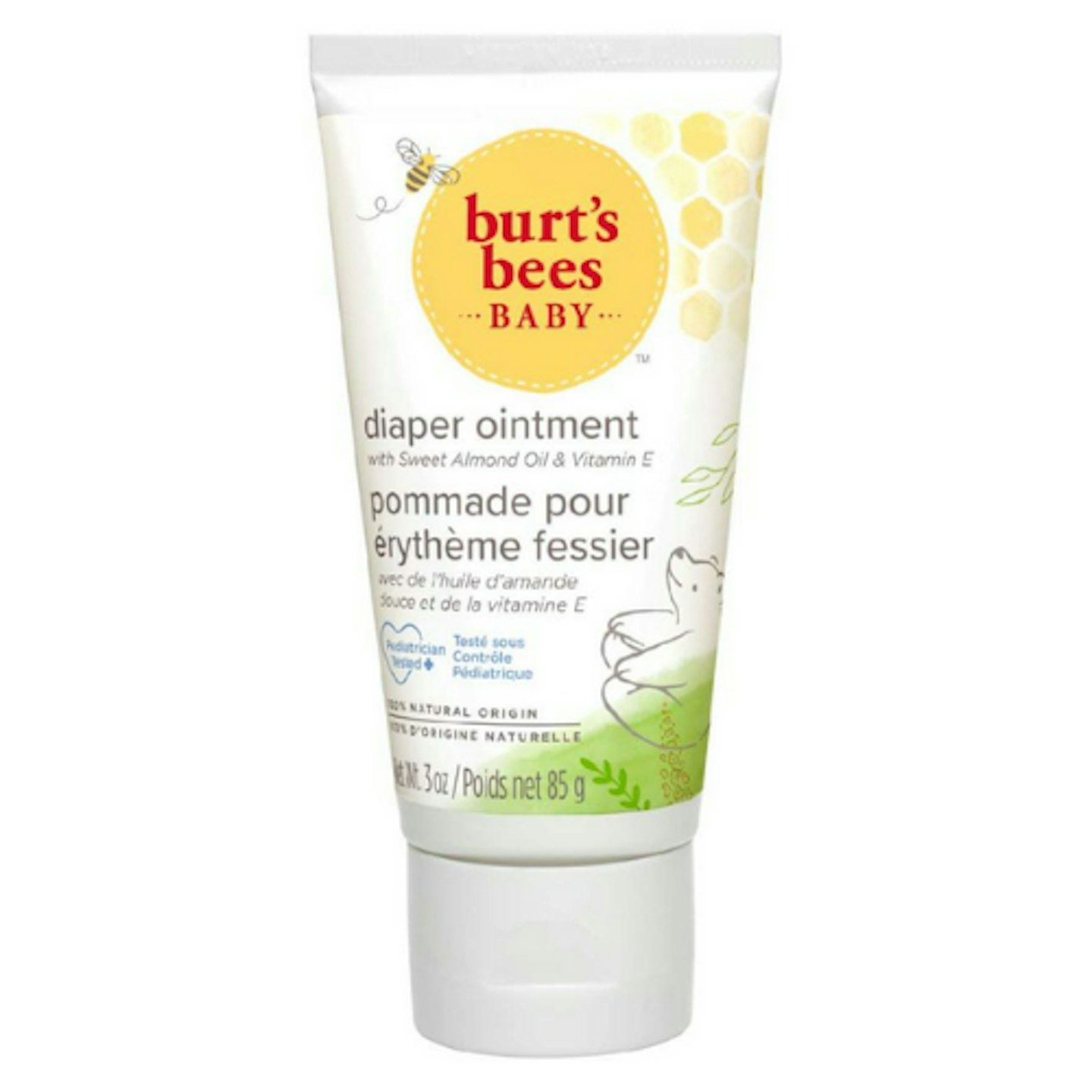
Description
Burt's Bees Baby™ 100% Natural Diaper Rash Ointment has protecting properties to treat and prevent diaper rash. It's 100 per cent natural with 40 per cent zinc oxide, which impressed our testers because that is the maximum strength needed to seal out moisture, which can irritate your baby's bottom.
It'll nourish and recondition your baby's skin naturally with shea butter, lavender oil and jojoba seed oil, although these do mean this nappy cream is fragranced, which not all testers like, so a nappy rash cream like Aveeno baby Daily Care Nappy Barrier Creammight be preferable. However, it creates an effective emollient layer to absorb wetness, leaving the baby's skin soft, dry, and smooth.
Our mum tester Tammy said: "The Burts Bees Diaper Ointment is easy to use and smells great. It dries in quickly which definitely makes life and nappy changing a lot easier! I have used the cream on my newborn and two-year-old, and both have been fine with it. My newborn kept getting a nappy rash, but since using this she has been fine."
Shortlisted for Best Nappy Cream in 2021, read our full Burt's Bees Baby review.
Pros
- Safe for delicate skin
- Non-irritating and soothing
Cons
- Scented
Best nappy rash cream for fungal nappy rash

www.superdrug.com
Description
Canesten clotrimazole cream is used to treat fungal nappy rash. It's a pharmacy item, so you'll have to complete a questionnaire at checkout to buy this to make sure you're getting the right product for your needs, but our testers like how quickly it works and it might save you a trip to the doctor.
Canesten helps relieve symptoms associated with fungal infections as well as nappy rash, such as itching, burning, redness, and inflammation, providing relief and promoting comfort. Making it a great product even when your little one no longer requires nappies.
One expert parent tester said: "Worked instantly. The skin was clear by day two to three days." Another tester agreed, "This cream worked its magic after four days."
Pros
- Effective for fungal nappy rash
- Gentle - only 1% clotrimazole
Cons
- You will need to speak to a pharmacist
Best organic nappy rash cream
Description
Help keep your baby's skin soft and comfortable with this cream.
It is made with nourishing organic beeswax and organic chamomile. It is suitable for a baby's delicate skin, 100 per cent natural, and our testers love that the ingredients are all organic.
Unfortunately, it is not suitable for newborns and is recommended for babies from three months old. The cream contains essential oils that could be too harsh or irritating for a newborn's delicate skin.
Upon our further inspection of the ingredients, this product contains Anthemis Nobilis Flower Oil; this is chamomile flower oil, and while chamomile oil is generally considered safe for topical use in diluted forms, it can sometimes cause skin irritation or allergic reactions, especially in individuals with particularly sensitive skin, such as newborns and infants.
So, if you want a more gentle nappy cream, try Good Bubble Organic Coconut Oil.
However, for older children, you can apply at each nappy change to help keep your little one's bottom soft and comfortable and prevent nappy rash in the future.
Our mum tester Danielle said: "My daughter has been using this cream for three weeks now, and we are yet to have a nappy rash breakout, so it’s a big thumbs up from me. I love the smell and texture of the cream and a little bit goes such a long way. In addition to this, it’s so easy to apply, and I find there’s less residue left behind after using the product compared to others I have used in this market. This makes it easier for me when trying to get the clean nappy on after applying. We both don’t get in such a mess!"
Shortlisted for Best Nappy Cream in 2021, read our Neal's Yard Remedies Baby Barrier Cream review.
Pros
- Made with organic ingredients
- The cream contains some great moisturising ingredients, such as sunflower seed oil and glycerin, which helps to hydrate and nourish the skin, keeping it soft and supple.
- Helps prevent nappy rash
Cons
- Suitable for three months plus
- We wouldn't recommend this for sensitive skin
Best nappy rash cream for sensitive skin
Description
Awards: The Good Bubble Organic Coconut Oil won Silver in the 2021 Mother&Baby Awards Best Nappy Cream category.
We really like how the multi-purpose wonder balm can be used on dry skin on for the whole family. Suitable for newborns and those with sensitive skin, this lovely tub of virgin, organic coconut oil is an ideal moisturiser for happy bottoms, helping to protect delicate skin, which our testers loved.
Coconut oil contains fatty acids and antioxidants to help soothe and calm sensitive or inflamed skin, reducing redness and irritation. We love this natural ingredient that has a lovely, subtle scent.
It's also perfect for winding down after bath time with a gentle baby massage, but check that your little one has no allergies to coconut. Paediatrician-approved and clinically proven as suitable for sensitive and eczema-prone little ones, this is a great option for newborn skin.
Our mum tester Carol says: "I really love all of this range. The containers that they all come in are excellent and suitable for what's inside. My favourite is the wash with the push-down lid as the fragrance is lovely. Another favourite is the coconut oil moisturiser that's suitable for newborns. My little one has dry skin, and this has been amazing. I like how the products are all-natural based, and there are no nasties inside."
Read our Good Bubble Organic Cocobut Oil review.
Pros
- Suitable for newborns
- 100% pure organic coconut oil
Cons
- Not suitable for anyone with an allergy to coconut oil
Best nappy rash cream with lanolin
Description
Awards: The My Expert Midwife No Harm Bum Balm won Gold in the 2021 Mother&Baby Awards Best Nappy Cream category.
This rich but simple nappy cream provides gentle, effective relief and protection and helps to prevent skin damage and soreness.
Midwife-developed and mum-approved, this 100 per cent naturally derived, ultra-smooth serum takes care of delicate skin.
This rich but thin serum glides on easily without dragging sore skin, containing only five key ingredients, including medical-grade lanolin for skin protection and calendula for soothing redness and soreness.
Unfortunately, Lanolin isn't suitable for vegans. This ingredient is a natural substance extracted from sheep's wool. It is very popular in skincare products but not wholly cruelty-free.
Our testers loved how the one-handed dispenser is hygienic and helps when managing a wriggling baby. However, testers did think it was expensive.
Our mum tester Julianne said: "This product is so smooth and easy to put on. It has reduced the time spent changing my daughter's nappy as she no longer suffers from redness after I have been using it for over two weeks. I have found other products that are larger to carry around, so this fits perfectly into my changing bag, so it is the ideal product for a busy mum."
Pros
- Ultra smooth serum
- One-handed dispenser
- It is very good for especially sore nappy rash as it can be applied easily rather than a cream that needs to be rubbed in.
Cons
- Not suitable for vegans
- It is a little more expensive than other products on the list
How to help prevent nappy rash
You can prevent your baby from developing a nappy rash in a number of ways according to the NHS.
• Change wet or dirty nappies as soon as possible
• Clean the whole nappy area gently but thoroughly, wiping from front to back. Use water or fragrance-free and alcohol-free baby wipes
• Bath your baby daily – but avoid bathing them more than twice a day as that may dry out their skin
• Dry your baby gently after washing them – avoid vigorous rubbing
• Lie your baby on a soft baby towel and leave their nappy off for as long and as often as you can to let fresh air get to their skin
• Do not use soap, bubble baths, or lotions
• Do not use talcum powder as it contains ingredients that could irritate your baby's skin.
Marley adds, “In the winter, nappy rash can be increasingly difficult to manage as extra layers and thicker clothing may mean that dirty nappies are not detected quick enough, meaning your baby is left in contact with poo or wee for a long period of time, which can lead to nappy rash. When the temperature drops, there may also be less opportunity for nappy free time. It is however important that your little one can kick and move freely whilst allowing warm air in the house to reach their skin."
How often should you use nappy rash cream?
Most nappy rash creams can be applied every time you change your babies bum, and this can also help to prevent irritation.
Once you've cleaned your babies skin with a wipe or a clean reusable wipe, gently apply a pea-sized amount of your chosen nappy rash cream onto your babies bottom before putting a fresh nappy back on them.
When you should ring your GP
If your baby's nappy rash isn't clearing up after using a general nappy rash cream, if it's getting worse, or if it's bleeding and looking infected, then book an appointment with your GP to get it checked out.
They can do a test to find out if the rash is infected and advise you on the best course of action.
Is Sudocrem or Bepanthen better for nappy rash?
Both work well to prevent and treat nappy rash. Sudocrem is very thick and can be drying, whereas Bepanthen is thinner but stickier. Both work well as a barrier cream to protect your little one's skin, and they can be used to heal nappy rash. Sudocrem does have antiseptic properties, which are very good for healing, but it does have a slightly medicinal smell. Bepanthan is great for a daily cream, but with both creams, you only need a little bit, and they can be used frequently. Whether you prefer Sudocrem or Bepanthen is really a personal choice, and it depends which best suits your baby's skin.
Is Vaseline good for a nappy rash?
Vaseline is great for protecting the skin of your little one's delicate nappy area. It will create a barrier between the skin and the contents of the nappy. Vaseline is petroleum jelly so won't be the best choice if you are looking for natural, organic ingredients, plus, while it has excellent water repellent qualities, it does mean it doesn't allow the skin to breathe so it might not be the best for every day use. It is often recommended for immediately after birth to protect your little one's bottom from their first baby poo, or meconium, which is typically thick and sticky and can irritate their skin.
What's the best nappy cream?
All of the nappy rash creams we have recommended will work wonders in soothing your little one's bottom, and the best one for you will depend on the condition of their bum.
That said, out of the range of barrier creams, we love the Weleda nappy cream.
Weleda's 100 per cent certified natural baby range works with all types of babies' skin, from normal to hypersensitive. Packed with Calendula, a popular herb used in skincare and medicinal products, it'll soothe irritation and comfort the skin. It even has antiseptic, antimicrobial, and anti-inflammatory properties. Not only is it a deeply nourishing, protective barrier cream which cares for the delicate skin of the nappy area, but it's also completely free from synthetic preservatives, fragrances, and colourants.
Dermatologically tested and developed with the assistance of physicians and midwives, we know that the Weleda nappy cream will help to naturally care for and support your youngster's skin.
Trying out the Weleda Baby Calendula Collection, our mums said:
Mum tester Victoria: "I would recommend the Weleda range as they are a reasonably priced complete range that is suitable for an infant as well as older children, particularly those with sensitive skin. The whole range smells divine, and they last well as you only need a small amount. The nappy cream is also good, rubs in easily, and it seems to prevent nappy rash well."
Mum tester Amanda: "I would highly recommend the calendula products. I loved the smell and how soft and moisturised my baby's skin feels after using them. They feel quite luxurious."
About the expert
Marley Hall is a registered midwife, writer and mother of five. She has practised midwifery in various settings throughout London and Surrey over the past 14 years covering both the NHS and private sectors. She covers all aspects of midwifery care including antenatal care as a community midwife, labour and birth care on both birthing suites & birth centres and postnatal care on both the ward and in the community. She regularly contributes to publications such as Grazia, Mother & Baby, Marie Claire, Huffpost, BBC, Channel 4 and she has published a book, Midwife Marley's Guide For Everyone - Pregnancy, Birth & The Fourth Trimester.
Samantha Ball is a Commercial Content Writer and freelanced for the Mother&Baby website for two years before joining the team full-time. She's a mum of two and loves browsing for the best products and cute outfits.
